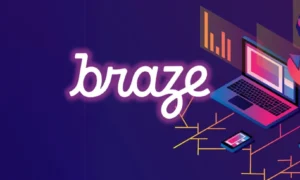Apple’s latest generation of AirPods introduced a feature that caught the world’s attention: real time translation directly through your earbuds. Imagine sitting in a café abroad, wearing your AirPods, and hearing what someone says in your language almost instantly. The feature, called “Live Translation,” promises to break down communication barriers and make multilingual conversations more accessible. It is one of the most impressive consumer innovations of recent years, a glimpse into what the future of communication might look like.
Yet for all its appeal, this technology is not ready to replace professional interpreters, especially in environments where accuracy, nuance, and trust matter. Travel conversations or quick exchanges with locals are one thing; legal hearings, medical consultations, and corporate negotiations are quite another. Machine translation can help you understand the surface meaning of a conversation, but it still struggles with context, tone, and the emotional precision that only a human interpreter can provide.
The Promise and Limits of Real Time Earbud Translation
The AirPods’ Live Translation feature is designed for simplicity. When paired with the latest iPhone and running the right software, users can engage in two way conversations with people speaking other languages. It works by listening to speech, processing it through Apple Intelligence, and playing the translation directly into your ears. For travelers or casual users, this feels revolutionary.
However, this convenience comes with clear limitations. The number of supported languages remains small, and accuracy drops sharply in noisy environments or when multiple speakers are involved. Accents, idioms, and specialized terminology, especially in business or legal contexts, are frequent sources of confusion. The system also relies on internet connectivity, updated firmware, and specific hardware. Most importantly, it cannot handle fast exchanges, cultural nuances, or simultaneous dialogue between several participants. It is a powerful tool for daily communication, but not for professional interpretation.
Why Professional Interpretation Still Matters
In high stakes environments, meaning goes beyond words. Professional interpreters do not just translate; they interpret intent, tone, and emotion. They are trained to handle cultural sensitivity, technical vocabulary, and unpredictable scenarios that no algorithm can yet anticipate. During a live event, an interpreter adjusts instantly to the speaker’s pace, detects humor or tension, and ensures that the audience receives the message exactly as intended.
This is particularly true for simultaneous interpretation, where the interpreter listens and speaks almost at the same time as the original speaker. It allows participants to follow a conference, summit, or presentation in real time without interrupting the natural flow of the event. Attendees hear the translation through headsets while interpreters work from booths or designated areas. This seamless communication is critical in large, multilingual events where timing, precision, and clarity define success.
Consecutive interpretation follows a different rhythm. The speaker pauses after each section, giving the interpreter time to render the message into the target language. This mode is ideal for interviews, board meetings, legal depositions, or small gatherings where interaction and nuance are more important than speed. Consecutive interpretation emphasizes understanding and accuracy over immediacy, offering a more reflective pace for participants to engage meaningfully.
Technology vs Human Interpretation: What Makes the Difference
The difference between AI translation and human interpretation is the same as that between understanding a sentence and understanding a situation. A device can process vocabulary; a human can interpret meaning. Earbud translation might tell you what someone said, but a professional interpreter helps you grasp why it was said and how it should be received. This distinction is what keeps human interpretation indispensable for courts, international conferences, and diplomatic negotiations.
Where devices depend on data, interpreters rely on intuition, training, and cultural knowledge. A human interpreter can detect sarcasm, formality, or hesitation, elements that carry enormous weight in legal or business contexts. They also ensure confidentiality, something that automated systems cannot guarantee. Most importantly, interpreters provide empathy, which builds trust between speakers who would otherwise be separated by language.
Looking Ahead: Collaboration Between Technology and Expertise
The emergence of real time translation in consumer devices shows that the world is moving closer to universal communication. It is easy to imagine a future where artificial intelligence handles routine translation tasks instantly and reliably. But even in that future, professional interpreters will remain essential for managing complex dialogue, interpreting intent, and maintaining the integrity of human interaction.
Technology will continue to evolve, but human interpretation represents something that algorithms cannot replicate: judgment. An interpreter can sense when a statement is ambiguous, when a tone changes from formal to friendly, or when a word carries a cultural implication that machines miss. As AI grows more advanced, interpreters will likely use it as a tool rather than a rival, enhancing preparation, terminology research, and coordination, but the final voice that bridges languages will still be human.
Understanding Each Mode in the Real World
At a global summit, simultaneous interpretation keeps speeches flowing without interruption, allowing leaders from different nations to exchange ideas seamlessly. In a courtroom, consecutive interpretation ensures that witnesses, judges, and attorneys understand one another with absolute precision. These two modes continue to define the standard for professional language mediation, combining speed, accuracy, and cultural fluency in ways that no machine can yet achieve.
The Future Speaks in Every Language, But Humans Still Lead the Conversation
The AirPods’ translation feature is a step toward a multilingual world that is easier to navigate. It can make travel smoother and casual conversation friendlier. But when words shape decisions, carry legal consequences, or represent global dialogue, professional interpretation remains the gold standard. Human interpreters do not just translate sound; they carry meaning, context, and trust across every border. And that is something no earbud can yet deliver.



































